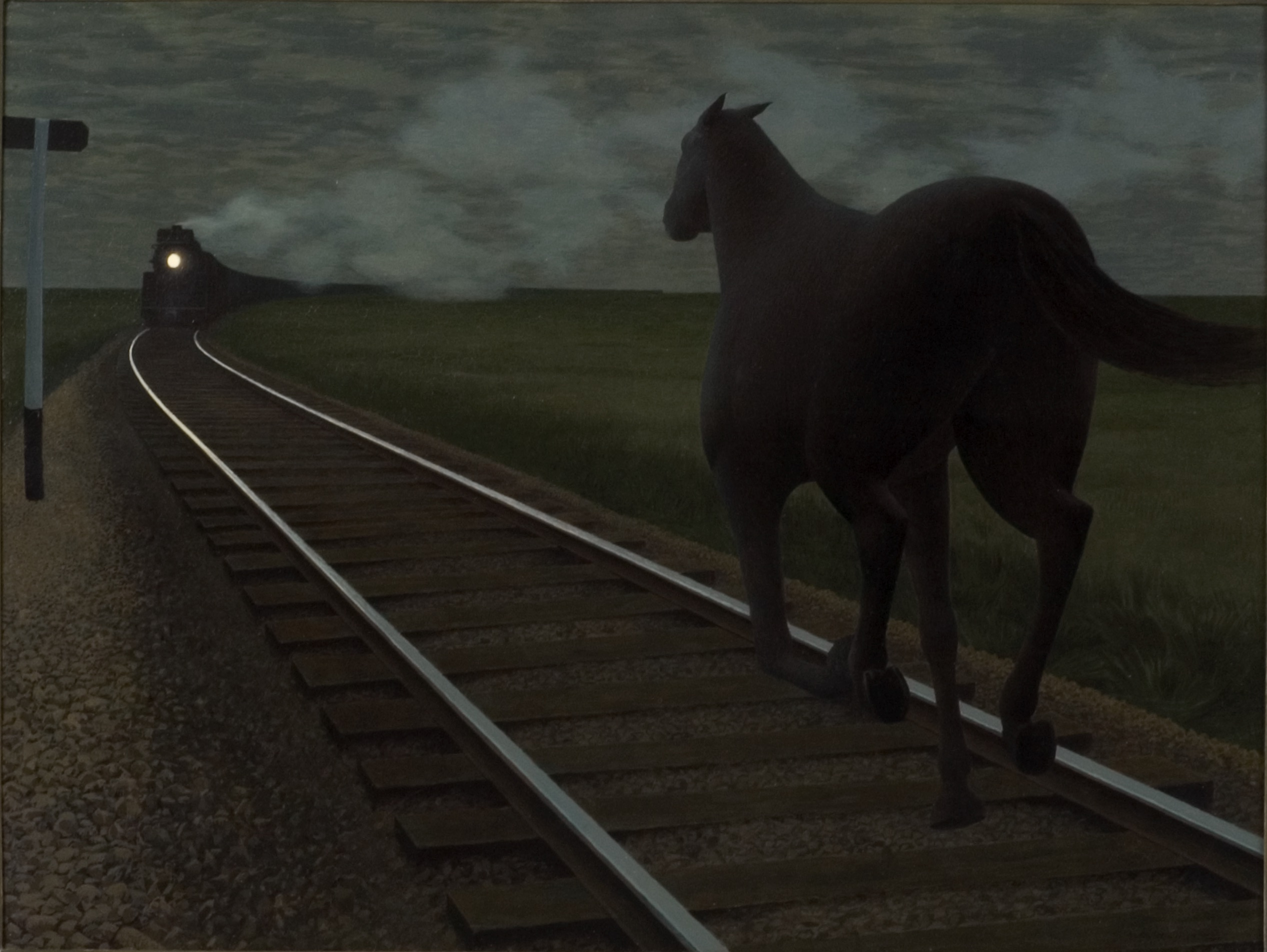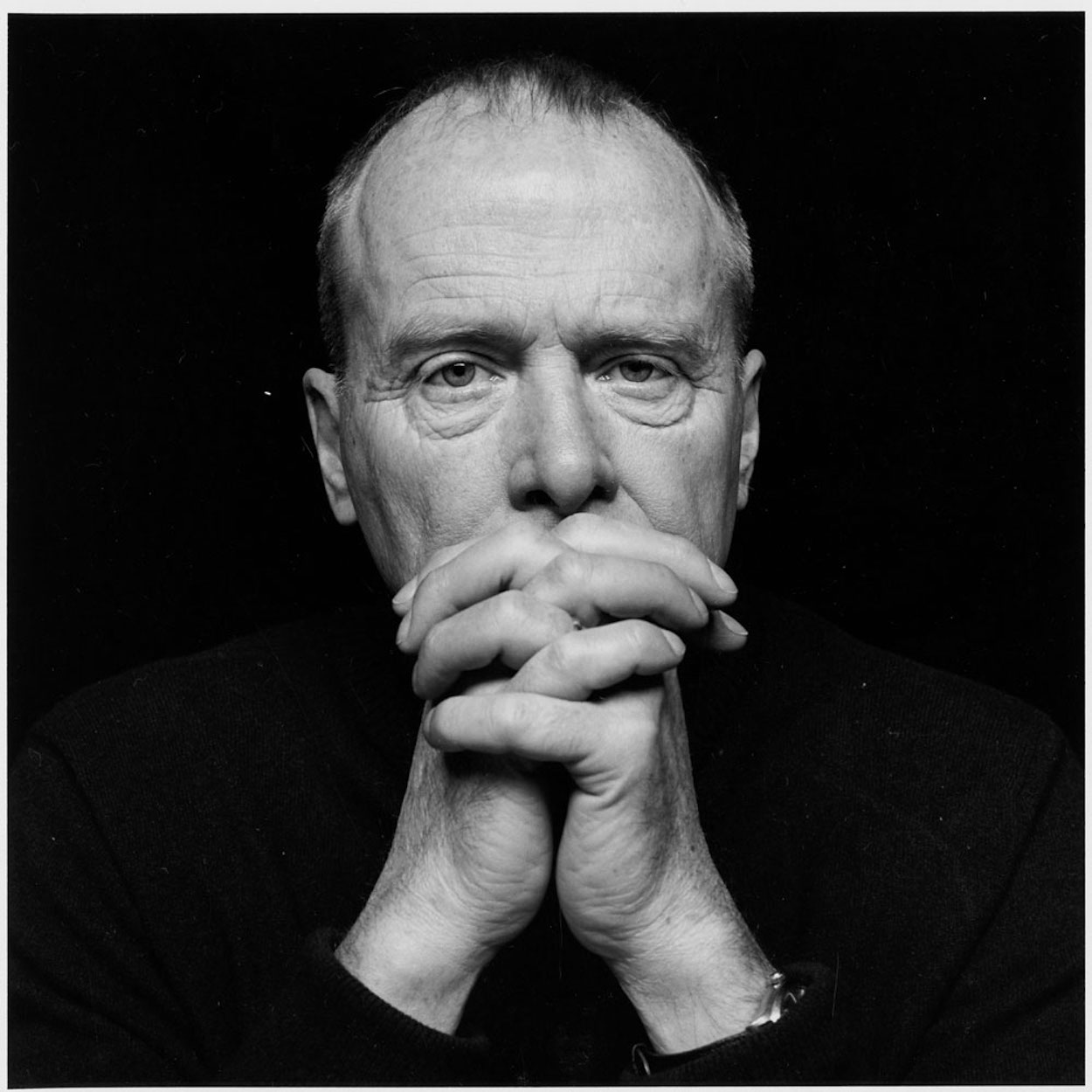Momentum and tension draw the viewer into the scene of a galloping horse on a collision course with a locomotive speeding down the tracks. The probable impending doom of the horse is very disconcerting, yet the viewer cannot look away. Canadian artist Alex Colville was a master of creating scenes that at times intrigue and at other times discomfort the viewer. There is always a sense that there is more to his paintings that what is revealed.
Horse and Train was inspired by a verse written by South African poet Roy Campbell: “Against a regiment I oppose a brain / And a dark horse against an armoured train". Like Colville’s other works, it was meticulously planned and painstakingly executed. Layer upon layer of paint was slowly applied to produce a smooth and stark image.
Weighing life and death, good and evil was borne from Colville's experience as a war artist in World War II. He was in his early twenties when he was deployed throughout Europe to document what he saw including open mass graves of the liberated Bergen-Belsen concentration camp in 1945. The haunting images he witnessed remained with him and profoundly affected his art. He was likewise influenced by American Realist painters Edward Hopper and George Tooker. Colville's works did not incite people to action and reform but provided silent commentary on the world around him. His motifs included family, animals, and landscapes near his home in New Brunswick and Nova Scotia. The train tracks depicted in Horse and Train run through the marshes at Aulac, New Brunswick.
The gleaming rails, reflecting the beam of the train's headlight, guide the viewer's eyes along the tracks toward the oncoming train. By positioning the viewer alongside the tracks, facing the train head-on like the undeterred horse, Colville heightens the sense of danger and urgency. Despite the cognizance of motion, it is a static scene—a moment frozen in time. The viewer is left to wonder, “How will it end?”
- Martina Keogan


 Alex Colville
Alex Colville